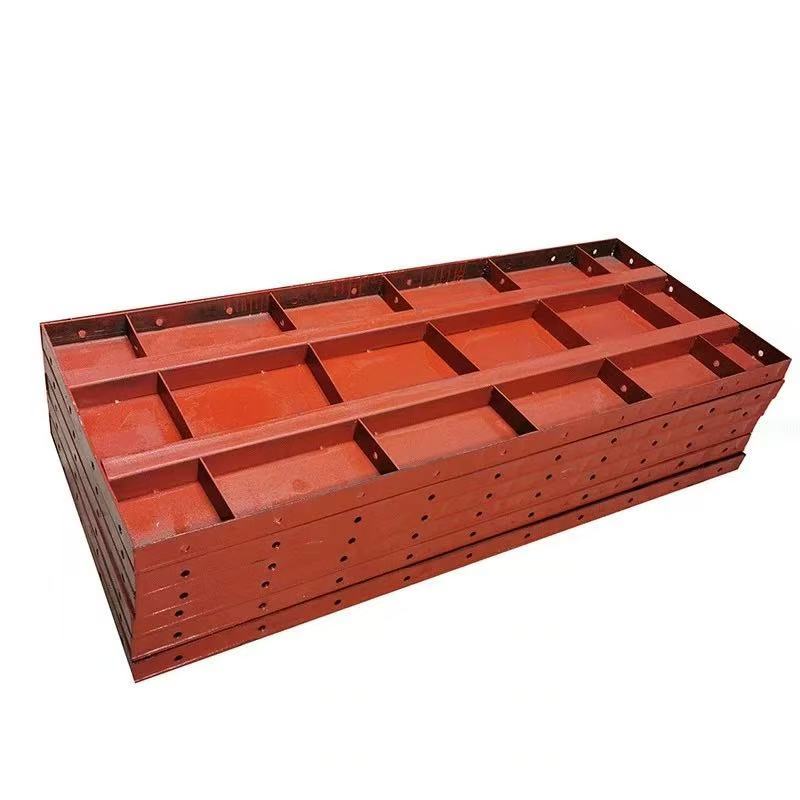Planning Your Project with Steel Formwork: Essential Considerations for Successful Construction
Planning Your Project with Steel Formwork: Essential Considerations Table of Contents Introduction to Steel Formwork What is Steel Formwork? Advantages of Using Steel Formwork Key Design Principles for Steel Formwork Planning and Preparation for Steel Formwork Cost Considerations in Steel Formwork Projects Safety Considerations When Using Steel Formwork Installatio

Planning Your Project with Steel Formwork: Essential Considerations
Table of Contents
- Introduction to Steel Formwork
- What is Steel Formwork?
- Advantages of Using Steel Formwork
- Key Design Principles for Steel Formwork
- Planning and Preparation for Steel Formwork
- Cost Considerations in Steel Formwork Projects
- Safety Considerations When Using Steel Formwork
- Installation and Removal of Steel Formwork
- Conclusion
- Frequently Asked Questions
Introduction to Steel Formwork
In the ever-evolving field of construction, the choice of formwork materials is crucial for achieving structural integrity and efficiency. **Steel formwork** has emerged as a preferred option among contractors and builders for its durability, precision, and reusability. As we delve into the essential considerations for planning your construction project using steel formwork, we will explore its numerous benefits and provide insights on the best practices to ensure your project succeeds.
What is Steel Formwork?
Steel formwork consists of prefabricated steel panels that are used to create the molds for concrete structures. Unlike traditional timber formwork, steel formwork offers enhanced strength and stability, making it ideal for various applications, including high-rise buildings, bridges, and complex architectural designs. The panels can be customized to fit specific project requirements, ensuring that builders achieve the desired shapes and dimensions with precision.
Advantages of Using Steel Formwork
When considering materials for your construction project, the advantages of steel formwork are significant:
Durability and Longevity
Steel formwork is renowned for its **strength** and **durability**. Unlike wood, which can warp or degrade over time, steel panels withstand harsh weather conditions and can be reused multiple times, making them a cost-effective choice in the long run.
Precision and Quality Finish
Steel formwork provides a **smooth surface finish** that minimizes the need for additional finishing work. This precision helps maintain the structural quality of the concrete, reducing the likelihood of defects and ensuring a polished final product.
Time Efficiency
The assembly and disassembly of steel formwork are typically faster than traditional materials, leading to reduced project timelines. This efficiency is particularly beneficial for large-scale projects where time is of the essence.
Environmental Sustainability
Using steel formwork aligns with sustainable construction practices. Steel is recyclable, which reduces waste and promotes eco-friendly building methods. Additionally, the long lifespan of steel panels contributes to lower resource consumption over time.
Key Design Principles for Steel Formwork
Effective design is crucial for maximizing the benefits of steel formwork. Understanding the fundamental principles can help streamline your project:
Load-Bearing Capacity
Assessing the load-bearing capacity of the formwork is essential to ensure it can handle the weight of the concrete and any additional loads during curing. Engineers must conduct proper calculations to avoid structural failures.
Jointing and Connections
The quality of joints and connections in steel formwork can significantly impact the overall stability of the structure. Proper alignment and secure fastening are critical to prevent leaks and maintain the integrity of the concrete pour.
Modular Design
Opting for a modular design facilitates ease of assembly and flexibility in adapting to various project requirements. Customizable steel panels can be designed to fit different shapes and sizes, making them versatile for diverse construction applications.
Accessibility and Safety Features
Designing for accessibility ensures that workers can safely navigate the construction site. Incorporating safety features, such as guardrails and secure access points, minimizes the risk of accidents during installation and removal.
Planning and Preparation for Steel Formwork
Successful implementation of steel formwork requires thorough planning and preparation:
Site Assessment
Conduct a detailed site assessment to evaluate the soil conditions, topography, and any potential obstacles that may affect the installation of steel formwork. Understanding the site layout will help inform the design and logistics of your project.
Material Procurement
Select a reliable supplier for your steel formwork materials. Ensure that the panels meet industry standards for quality and durability. Timely procurement will also help prevent delays in the project schedule.
Training and Workforce Management
Invest in training for your workforce to ensure they understand the specific requirements of steel formwork installation. A skilled team will contribute to the efficiency and safety of the project, ultimately leading to better outcomes.
Construction Timeline
Establish a realistic construction timeline that accounts for all phases of the project, from preparation to installation and concrete curing. Utilize project management tools to monitor progress and make adjustments as necessary.
Cost Considerations in Steel Formwork Projects
Understanding the financial implications of utilizing steel formwork is crucial for effective project management:
Initial Investment vs. Long-Term Savings
While the initial investment for steel formwork may be higher than traditional materials, the long-term savings associated with durability, reusability, and reduced labor costs make it a financially sound choice for many projects.
Budgeting for Maintenance and Repairs
Although steel formwork is durable, it is essential to budget for routine maintenance and potential repairs. Regular inspections can help identify minor issues before they escalate, ensuring the longevity of your investment.
Hidden Costs
Be aware of potential hidden costs, such as transportation, storage, and handling fees associated with steel formwork. Factor these expenses into your budget to avoid surprises during the project.
Safety Considerations When Using Steel Formwork
Safety should always be a top priority in construction projects:
Personal Protective Equipment (PPE)
Ensure that all workers are equipped with appropriate PPE, including hard hats, gloves, and safety shoes. Proper gear minimizes the risk of injuries on-site.
Regular Safety Training
Implement regular safety training sessions to keep workers informed about best practices and protocols for working with steel formwork. A culture of safety enhances overall project performance.
Emergency Procedures
Establish clear emergency procedures to address potential incidents, such as equipment failures or accidents. Having a plan in place can mitigate risks and protect workers.
Installation and Removal of Steel Formwork
The installation and removal phases are critical to the success of your project:
Installation Process
Begin by assembling the steel panels according to the design specifications. Proper alignment and secure fastening are essential to prevent leaks and ensure structural stability. Utilize cranes or hoists as needed to position heavier panels safely.
Concrete Pouring
During the concrete pouring phase, monitoring the consistency of the mix and the pour rate is vital. Maintaining optimal conditions will result in a high-quality finished product.
Removal of Formwork
Carefully plan the removal process to avoid damaging the newly poured concrete. Follow manufacturer guidelines for curing times and ensure that the formwork is removed systematically to maintain structural integrity.
Conclusion
Planning your construction project with steel formwork involves several critical considerations that can influence the overall success of your endeavor. By understanding the advantages of steel formwork, adhering to key design principles, and implementing effective planning and safety measures, we can ensure that our projects not only meet but exceed expectations. Embracing these practices will lead to enhanced efficiency, cost savings, and high-quality results that stand the test of time.
Frequently Asked Questions
1. What are the main benefits of using steel formwork in construction?
Steel formwork offers durability, a smooth finish, time efficiency, and environmental sustainability, making it a preferred choice for many contractors.
2. How long can steel formwork be reused?
With proper maintenance, steel formwork can be reused for multiple projects, often exceeding 100 uses before degradation occurs.
3. Is steel formwork more expensive than traditional wood formwork?
Although the initial investment is higher, the long-term savings from increased durability and reduced labor costs often make steel formwork more cost-effective.
4. What safety measures should be in place when using steel formwork?
Implement personal protective equipment (PPE), conduct regular safety training, and establish emergency procedures to ensure worker safety.
5. Can steel formwork be customized for different project requirements?
Yes, steel formwork panels can be tailored to fit specific project needs, allowing for versatility across various construction applications.
Key words:
PREVIOUS:
PRODUCT SEARCH
Search And Quickly Find The Products You Need
With advantages in technology, quality, and service, the company is steadily advancing in the industry, continuously providing high-quality hydraulic rubber products and services to global customers, demonstrating strong development potential and broad market prospects.









